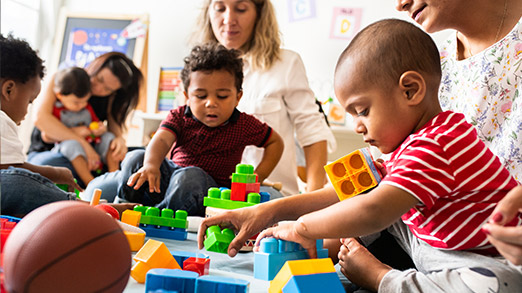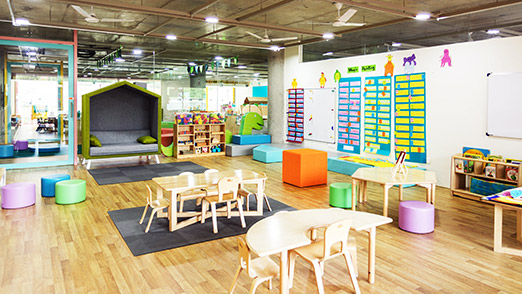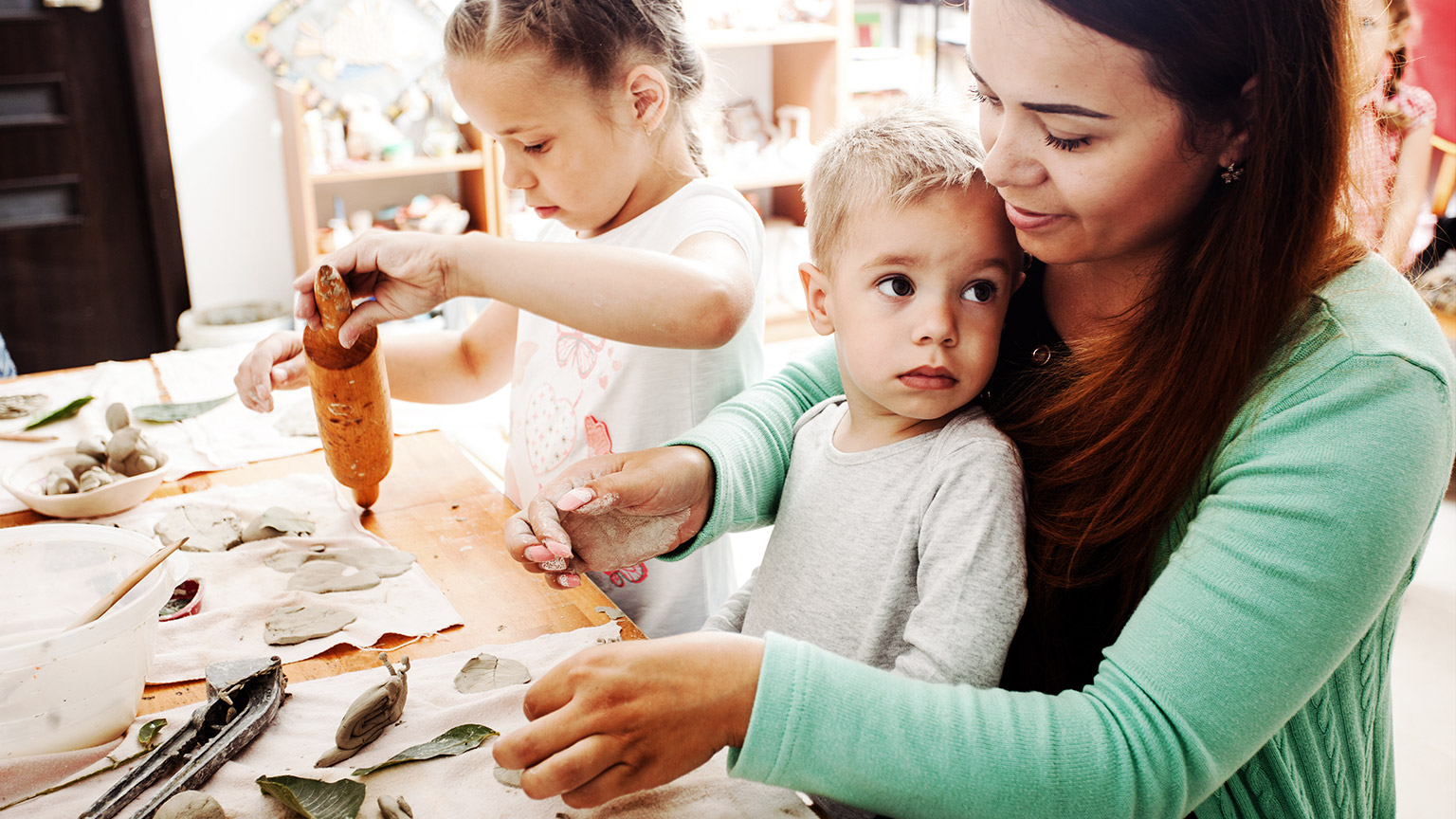The role of an educator includes a diverse range of tasks, responsibilities and workplace activities. To be competent in their roles, educators need to consider all aspects of the service, their role and the role of their colleagues. A good educator provides a holistic learning experience for children by facilitating a safe and positive environment and inspiring and encouraging them to become the best version of themselves. They must have a clear and accurate understanding of the legal and ethical frameworks which govern their role. The implementation of the Early Years Learning Framework enhances children’s’ learning through their ideas, interests, strengths and abilities whilst they play. Educators must build their capacity by utilising professional development opportunities.

Many services have an organisational hierarchy similar to the example below. Depending on the size of the service (number of rooms and number of children) and the size of the organisation, there may also be additional roles such as Area Manager, CEO, Management Committee and many more roles that make up the operational hierarchy of a service. The hierarchy below is an example:
Each team member has very specific roles and responsibilities and is required to ensure their job tasks and workplace activities are completed in the time frames required and ensuring they are adhering to any guidelines, standards, and legislation. Similar to other organisations, you are responsible for performing in a professional manner in line with your Position Description and requirements of the role as an educator.
At Additional Resources, you can access a sample Job Description.
The complexity of the role of an educator can change from day-to-day depending on a range of factors such as:
- New laws, regulations or standards
- New guidelines from Recognised Health Authorities
- New children in the room who have specific needs
- Changes in educators/ New educators learning the routine and getting to know the children
- Promotions such as becoming the team leader
- Meeting children’s individual needs, communicated by the families
- Children’s individual needs based on to their developmental milestones
Below is an example of key facets of the role of an educator:
The following list outlines an extended list of facets that comprise an Educator's role in ECEC, demonstrating some of the complexity:
- Children’s health & safety
- Relationships with children & families
- Working in the education team effectively
- Documentation & paperwork
- Environments
- Preparing and implementing learning opportunities
- Medical conditions
- Respect for diversity
- Setting up play areas
- Engaging with children
- Playing and learning with children
- Sharing information and offering support
- Checklists and safety/task paperwork
- Operational documents & requests from managers
- Great communication and rapport building
- Great communication
- Sustainability
- Learning experiences
- Cleaning and resetting
- Safe environments risk assessing
- Programming and education documents
- Appreciation and following guidelines
- Sleep needs and nutrition activity
- Sharing the tasks and supporting each other
An example of a position description for a Certificate III Educator
| Name | |
| Job Description | |
|---|---|
| Job title | Early Childhood Teacher (ECE qualified) |
| Responsible to: | Head teacher, Centre Manager, Centre Directors |
| Rrespnsible for: | Children at Riverside Educare |
| Functional relationships with: |
Internal: All teachers, staff, management, children, parents and caregivers External: Other ECE establishments, primary teachers, visiting community members, community organisations, ministry representative, support services, educationalists |
| Primary objective/purpose: | To promote a quality, learning environment with meaningful, respectful relationships at the heart of what we do. To provide an early childhood education experience in collaboration with colleagues and families, founded upon sound and effective educational practice, in keeping with Te Whariki philosophies and Ministry of Education regulations |
| Key tasks/functions | Performance standard competency/outcome/expected result |
| 1. Learning and teaching | Deliver a curriculum that reflects current understanding of sound and effective practice and ensure that day-to-day practice is aligned to the policies and procedures of Riverside Educare |
| 2. Team responsibilities | Participating in relevant administration and operational planning to support effective practice and foster collaboration with other staff |
| 3. Relationships | Foster positive relationships with children and parents/whanau |
| The teacher role is pivotal to the success and experience children have at Riverside Educare | |
Watch Sandra’s story and Jessica’s story by The Early Years Count and reflect on why you want to be or are an educator and what the role might look like on a day-to-day basis:
Note
Element 7.1.1 of the National Quality Standard states: A statement of philosophy guides all aspects of the service operations. For more information on Quality Area 7 (Governance and leadership), visit ACECQA’s website.
Early childhood educators are passionate about their work and the incredible responsibility and opportunity they have to influence children’s growth, development, and learning.
A personal philosophy clearly defines you as an educator. It is a statement of reflection about your beliefs that influence your actions. It's the process of continuously examining, testifying and verifying your personal beliefs.
It is a tool that not only guides your own teaching and beliefs but also helps other educators and families understand your individual approach to early learning.
As part of the National Quality Standard, services are required to have a service philosophy that guides their practice and the choices they make in relation to the service.
It is important for services to have a philosophy that guides practice because educators can engage together in a common goal and approach to support children’s learning. Some services also align their philosophy to a mission statement, a vision and values that the service team and learning community engage with on an ongoing basis.
Often educators have their own philosophy that guides their practice and pedagogy and influences where they choose to work.
Check out the Reviewing your service philosophy fact sheet from ACECQA.
Watch this 16-minute video by Simon Sinek and think about your ‘why’.
Review the Little.ly service philosophy.
Case study

Tilly grew up in a country area in a small community and has always had a strong connection to community and to nature. She loves to recycle and upcycle things as they did on the land she lived on. She often likes to spend time in nature and is an open-minded and curious person.
Her educational philosophy and her pedagogy reflect her upbringing and interests in nature, along with her curiosity for exploring problems with an open mind and a question.
She was introduced to project work by a colleague who had worked in a service inspired by the approaches of educators in Reggio Emilia and she enjoyed implementing projects with the children she worked with.
She saw a position advertised for a role in a Reggio-inspired service and took the opportunity to join the team. She loved that her personal philosophy aligned so well with the service’s philosophy, and she felt that she was authentic and inspired every day.
Educational Approaches
Sometimes services decide to follow the principles of one particular educational approach. However, often, services create their own unique philosophy by blending different approaches.
Below you can read about some of the most popular early childhood approaches that may influence early childhood educators’ everyday practices.
Reggio Emilia approach5:
The Reggio philosophy is very much a child-centred approach that respects the potential of all children. They are viewed as active participants in the classroom with a level of control over their learning. Reggio teachers observe children and document their findings as part of an ever-evolving learning process.
With this approach children learn through play and curiosity is the order of the day. The founder of the Reggio Emilia approach was a teacher-turned-psychologist called Loris Malaguzzi. After WWII, a group of mothers established a school in the town of Reggio Emilia. Malaguzzi went to visit during the build of the school and the mothers asked him to teach the children.
The fundamental principles6 of the Reggio philosophy are centred upon:
- the image of the child - the child is seen capable, strong, powerful, competent, and most of all, connected to adults and other children
- the role of the teacher – the teacher is seen as an observer and guide who works in partnership with children to nurture their interest and advocate for their learning
- reciprocal relationships – that is based on respect to emphasise the valuing of the opinions, viewpoints and interpretations of others and the importance of adults and children learning together. Educators and families work as a team and they collaborate closely to support and enhance each child's development, sharing insights and strategies to ensure a cohesive and nurturing learning environment.
- a pedagogy of listening where everyone involved is open and receptive to difference and new ways of thinking
- the environment as third teacher – where the physical environment is seen as an opportunity to nurture and facilitate the learning and development of children.
- Typically, in a Reggio-inspired early childhood setting you will see:
- Project work with open ending to facilitate learning: Responding to children’s interests helps bring authentic engagement and exploration to life through active listening, leading with questions and hands-on learning.
- Inviting and inspiring environment: clutter-free indoor environment, with indoor plants, natural resources and natural light in the classroom, displaying children’s work, furniture and equipment organised at children’s level for easy access; inspiring outdoor areas with vegetable gardens and domestic animals (such as chickens)
This 1-hour webinar by Reggio Emilia Early Learning Centre explains the Reggio Emilia approach, summarises its essence and gives comprehensive examples of how it can be implemented in practice:
Montessori approach7
The Montessori philosophy was developed by dr. Maria Montessori who, as a doctor, worked with underprivileged children. She used her training as a scientist to observe how children learn and applied this to develop a better way to educate children with great results.
What’s most unique about Montessori is the prepared environment, which is also known as the ‘Montessori classroom’. It’s unlike anything you would see in a standard childcare centre because it’s filled with educational materials that link learning outcomes to children’s needs and interests at specific stages of their development. In a Montessori classroom children have respect, independence, and the freedom to direct their own learning experience.
Each material teaches a specific learning outcome that progressively builds children’s knowledge and skills. Through repetition and practice, children master the five areas of the Montessori Curriculum, which includes: Practical Life, Sensorial, Mathematics, Language, and Culture.
The role of the Montessori educator within this space is to observe what children are drawn to, and introduce them to the materials that link to those interests, so learning is always purposeful and engaging.
Typically, in a Montessori-inspired early childhood setting you will see:
- The physical environment (‘work centers’) is arranged according to subject area, and children are free to move around the room. There is no limit to how long a child can work on any one project or activity.
- Character education where children are encouraged to learn how to take care of themselves, their environment, each other - cooking, cleaning, building, gardening, moving gracefully, speaking politely, being considerate and helpful, doing social work in the community, etc.
- Mathematical ideas are introduced through sensorial experiences to perceive distinctions between similarities and differences. Precise language such as loud/soft, long/short, rough/smooth, circle, square, cube is used to describe these experiences to make the world meaningful to the child. Once children can see the distinctions of distance, dimension, graduation, identity, similarity and sequence they will be introduced to the functions and operations of numbers.
In this 4-minute video you can see how a Montessori service looks like and how it operates:
Steiner approach8
The Waldorf or Steiner approach to early childhood education is based on the teachings of Rudolf Steiner, an Austrian philosopher who attempted to find a link between science and spirituality and who founded anthroposophy.
The Steiner curriculum is designed to be responsive to the three developmental stages of childhood. The Physical from 0 - 7 years, The Imagination from 7 - 14 and the Spirit from 14 - 21 years.
According to the Steiner approach the first seven years are critical in determining the future wellbeing of children as this is when the foundations are laid for later learning and healthy development, including life-long physical, social, emotional, intellectual, and spiritual growth. Educators working with children aged 0-3 years of age need a special set of skills and personal qualities to ensure they are meeting the needs of each child to the best of their ability. They must also be aware of what it means to be a role model as children three-years and younger rely on imitation as one of the main ways of learning.
Typically, in a Steiner-inspired early childhood setting you will see:
- Meaningful daily activities such as work (cooking, cleaning, washing, gardening etc.), physical activities and the exploration of nature.
- The environment has to be quiet, simple, warm, peaceful and allow children to participate in safe exploring. Toys should be simple and made out of natural materials.
- Rhythmical and predictable daily routine with a reliable pattern, alternating between child led and teacher led activities.
- Respectful, caring and professional relationships with both children and adults.
- Less focus on teaching literacy and numeracy as in Steiner approach it is believed that these skills come more easily when children are given the opportunity to focus on developing their social, emotional and physical skills in an environment which emphasises play based learning experiences.
From this 4-minute video, although created by an American Waldorf school, you can have an impression of how the Steiner/Waldorf philosophy looks like in practice:
You can read more about different early childhood education approaches on the Care for Kids website or by researching the internet.
This article published on Aussie Childcare Network will give you some ideas of how to develop your personal philosophy.
Note: After reading and researching the different early childhood philosophies, think and reflect how this influences your philosophy.
Pedagogy and practice
What is Pedagogy? The EYLF states that Pedagogy is: ‘early childhood educators’ professional practice, especially those aspects that involve building and nurturing relationships, curriculum decision-making, teaching and learning.’ Read page 12 of the EYLF to explore pedagogy further.
If you are not sure what pedagogy is in early childhood is, please watch this video.
Educators are often influenced in their role by educational theories, research and current trends. They may have been exposed to ideas on teaching and learning or have grown up with certain views and knowledge which guides their pedagogy.
Research about early childhood is being conducted all the time and there are many opportunities for educators to review these studies and consider through critical reflection, how these findings might support or influence practice.
Contemporary perspectives such as Reggio Emilia, Montessori and Steiner (as discussed above) help us to understand children’s learning and development. This helps Educators plan for future learning, and this is called ‘pedagogy’ in teaching and early childhood environments.
Here is a useful table from ACECQA on developmental milestones. The knowledge of child development and what skills children may have at certain ages can guide your pedagogical decisions when working with children
acecqa.gov.au/sites/default/files/2018-02/DevelopmentalMilestonesEYLFandNQS.pdf
As a future educator, it is important to have knowledge of child development, theory and perspectives on how children learn. This will help us understand how and why children learn and develop the way they do. Remember – ALL children will develop and learn at different times and in different ways.
Watch the videos below and reflect on the different ways these two key theorists see development and learning. There are many theorist who have developed understandings of how children
Example
Piaget may influence an educator’s practice and pedagogy by inspiring them to focus on setting up support that assists children to move through their cognitive development stages.
Watch this 7-minute video by Sprouts to explore Piaget’s theory:
Read the below article by Child Australia titled “What is Pedagogy? How does it influence our practice?” and consider your own practice and what informs your pedagogy.
Example
A current research project being conducted in Australia called Playing with Gratitude is investigating the connections between the Science of Gratitude and children in education and care. The research is finding an observable increase in the wellbeing of children, families and children involved in the project. Therefore, an educator might choose to introduce a practice of gratitude into their daily routine with children.

An educator's role is important, and it comes with many responsibilities, and rights. The ECEC sector must abide by all workplace rules and guidelines and ensure their team are safe. As an educator, there are many support networks to ensure your rights are being met, you are developing as a professional and guided to meet your responsibilities.
Rights of an educator
Educators have the workplace rights that any other professions receive. The Fair Work Ombudsman supports employees and employers to determine rights and responsibilities. There are Safe Work and Fair Work requirements of employers, and educators must be supported and protected at work. Fair Work Ombudsman will support you in the following areas:
- Pay and awards: All employees working in Australia are entitled to a minimum wage. This is the minimum amount an employee can be paid for the work that they're doing. The minimum wage is set by the award (or enterprise agreement) that covers employees’ industry or occupation. This calculator can help you calculate base pay rates, allowances and penalty rates based on the award you are employed under.
- Entitlements (such as leave entitlements & accruals): All employees working in Australia are entitled to take paid or unpaid leave for many reasons. Minimum (paid) leave entitlements for employees come from the National Employment Standards (NES) and they depend on the employment type. This calculator can help you understanding your leave entitlements.
- Ending of employment: Employment can end for many different reasons. An employee may resign or they could be dismissed by their employer. However, the employment relationship ends, it’s important to follow the rules about ending employment, notice and final pay. There are also different rights and obligations when a job is made redundant or when a business becomes bankrupt.
- Contracts: An employment contract is an agreement between an employer and employee that sets out terms and conditions of employment. A contract can be in writing or verbal. An employment contract cannot provide for less than the legal minimum set out in the National Employment Standards (NES) or in the awards, enterprise agreements or other registered agreements that may apply.
- Workplace problems: Every employee has the right to work in a physically and emotionally safe environment where (s)he is treated with respect. Problems happen in every workplace from time to time. If they’re not dealt with, they can make workplaces unproductive and difficult for everyone. Favouritism, inappropriate work conditions, incorrect pay, unrealistic expectations, or unfair dismissal can be common problems employee sometimes experience. Some problems are easy to fix with just a simple conversation. Other workplace problems may take more time and effort. Either way, it’s best to identify and act on problems early before they disrupt work relationships and business. You can read more about workplace problems here.
- Discrimination, bullying or sexual harassment may be present at times at a workplace, but this more than simple workplace problems: discrimination, bullying and sexual harassment are not appropriate and be unlawful. Everyone has the right not to be bullied, sexually harassed or discriminated against at work. The Fair Work Act prohibits an employer from taking adverse action against an employee or a prospective employee for discriminatory reasons, including their sex, race, religion or gender. You can read more about discrimination, bullying or sexual harassment on Fair Work Ombudsman website, where you can find useful information about what you can do if you think you may be affected.
It is always important to know your rights, especially related to emotional safety in the workplace and be protected from bullying. This is important for you to know for three reasons:
- To ensure you are protected from bullying
- To ensure you understand your responsibilities in relation to how to treat others in the workplace
- To know what your responsibilities are in relation to reporting or responding to bullying behaviour in the workplace (against others)
Safe Work Australia provides support for employees regarding their physical and emotional wellbeing. Workers compensation is a form of insurance payment to employees if they are injured at work or become sick due to their work and it is governed by individual Australian states and territories.
Visit the following websites to learn more information about Fair Work:
- “Protections at work - Fact sheets” by Fair Work Ombudsman
- Fair Work Ombudsman website
- Safe Work Australia
Read the following article “Workplace Bullying” by Safe Work Australia to learn about what is considered workplace bullying and how can you protect yourself.
This 7-minute video published by Fair Work Commission explains what is workplace bullying and how you can protect yourself:
You also have the right to be supported by a Union where necessary. Many educators are part of a union who work to support individual rights as well as advocate for the sector including pay rates and conditions.
Many educators are employed under the Children’s Services Award. This article explains who is covered by this award and it provide you access to the award too.
If you ever have questions about your employment conditions, pay rates, superannuation contributions or situations you are experiencing at work, you can find out your rights by accessing the Fair Work Ombudsman, Safe Work Australia or the Union. You can also reach out to the Regulatory Authority in your state or territory to clarify any concerns you might have, and they could direct you to the right place if necessary. Of course, it is best to speak with your manager or appropriate leadership team members in the first instance.
Employment in ECEC

When you start working in ECEC you should:
- Receive and sign a contract of employment
- Complete documentation about yourself
- Receive an induction to the centre
- Be shown workplace policies and procedures
- Be advised of emergency procedures
- Receive a staff handbook
- Be asked to provide your qualification(s), including a current First Aid qualification and evidence of child protection training.
- Be asked to provide a valid police check and working with children check.
Check out the following articles by United Workers Union to understand more about what a Union does:
- Early childhood education and care needs urgent & tough coronavirus rules: Union releases plan
- Workforce shortages, centre closures, covid exposures: national action needed on early education
A copy of the Children’s Services Award, published by Fair Work Ombusdman in 2020, can be accessed offline here.
Note: For up-to-date information regards legislation, awards, etc. always refer to relevant official websites.
Responsibilities of an educator

Your employer will provide you with information related to your employment and support you with an induction. There are many documents to support your employment in a service and your knowledge of what is expected of you. Once you have been provided with this information, induction and support, you are responsible within the role to meet the expectations of the role.
Key responsibilities of an educator include:
- Ensuring you meet the position description requirements
- Following all laws, regulations and standards
- Protecting children from harm and hazard
- Contributing to improvement and the QIP
- Contributing to a positive team culture
Position descriptions also known as job descriptions outline your responsibilities, the organisation expectations of you in your role and guide some of the tasks or work activities you will be responsible for.
At Additional Resources, you can access a sample Job Description to familiarise yourself with common requirements and educators’ usual responsibilities.
When you begin in a role, it is important that you read all documentation and understand your responsibilities. Where you are unsure of your responsibilities are unclear, you should arrange to speak with your manager and clarify to ensure you can meet the requirements.
There are many documents to support your employment in a service and your knowledge of what is expected of you.
Non-compliance means not adhering to the rules, guidelines or responsibilities of the role. Your service can also be non-compliant where it does not adhere to the regulations or law. Compliance or complaint means following the rules.
Support networks for educators
There are many support networks and professional associations which we can access to ensure we are up to date with information about the sector, supported and growing professionally.
Sharing information and engaging in discussions with your colleagues is an important part of the networking process.
It’s a great idea to sign up on social media (if you have it) and add professional network groups about ECEC.
Below is a list of professional associations and places to access information and support:
- ACECQA
- Early Childhood Australia
- The Sector ECEC News and Reviews
- Early Learning Association Australia
- The Skills for Education and Employment
For an example of a Certificate III Educator position description check out the Little.ly Childcare example.

All education and care services have a list of policies and procedures that outline what and how they operate the service. Policies can be used to share a service’s stance on a particular topic or practice and to inform families and staff about the expected practice. Policies are often guided by the requirements outlined by recognised health authorities or other such laws or regulations.
Note
Approved providers of centre-based services and family day care services must ensure that the service follows the policies and procedures required under Regulations 168 and Regulation 169 - 170.
Division 2 Policies and procedures
- 168 Education and care service must have policies and procedures
- 169 Additional policies and procedures - family day care service
- 170 Policies and procedures to be followed
- 171 Policies and procedures to be kept available
- 172 Notification of change to policies or procedures
Example- Sun Safe Policy
The sun safe policy will be linked to the Cancer Council requirements and guidelines for services. Services cannot write a policy that achieves less than the requirements of the guidelines. For example, policies are unable to state that children can play outside without sun protection.
A service policy may, however go ‘above and beyond’ the guidelines such as dictating the following: we keep hats on all year round to encourage children’s hat wearing practice, however we do allow beanies in winter.
Case study

Declan, the lead educator in the 2-3-year-old Toddler room, has been asked to change a child’s nappy with a student observing so they can learn the policy and the procedure. He was asked to explain the difference between the Policy and the Procedure. He outlines the policy first and says that the policy is designed to ensure that all children are provided with a positive nappy changing experience and minimise illness and ensure hygiene is maintained.
He then explains to the student that the procedure is what they will observe of him when he changes the nappy. He talks the student through the 13 steps in the procedure as he completes the nappy change.
- Policies provide clear guidelines to staff in relation to WHAT to do.
- Procedures provide clear guidance and instruction around HOW to do the task.
- Many policies and procedures are combined into one document for ease of access.
Requirements for policies and procedures in ECEC
Under the National Regulations, there are specific policies that all services must have in place. Regulation 168 requires services to have current policies and procedures developed.
Note
Instances of non-compliance with policies, procedures, regulations, standards or the law must be reported to your manager or leader. This is a breach of Regulation 170 Policies and Procedures to be followed.
Read the article “Regulations on policies and procedures in early childhood” by Lorina from Aussie Childcare Network to understand what responsibilities service providers have in relation to the specific policies and procedures they must have in place.
Services are required to review their policies and ensure they are up to date, communicated to families and staff and that a consultation process has been put in place to allow for feedback about the policies. It is important that educators contribute to the review of the policies and procedures to be part of the continuous improvement of the service.
As an educator, you might be asked to review a policy or procedure by your manager. You should read the policy and/or procedure and provide feedback in relation to any current challenges educators, children or families face with the policy as it stands, or suggest any ideas for improvement or changes to legislation, regulations or wording in the document.
For example, there might be an opportunity to make the wording more respectful of diversity.
Once a policy has been reviewed and has been approved, as an educator you are now responsible for adhering to this policy.
Therefore, where you have feedback for possible modifications, it is important to share that during the consultation process.
Read the "Policy tip sheet" provided by ACECQA to ensure policies are consistently being implemented.
In the Guide to the NQF under section 7.1 Policies and Procedures, the guide explains the policies and procedures a service MUST have to operate. These include:
| Required policies and procedures for all service types |
|---|
|
Health and safety, including:
|
| Incident, injury, trauma and illness procedures (Regulations 85, 168(2)(b), Standard 2.1) |
| Dealing with infectious disease (Regulations 88, 168(2)(c), Standard 2.1) |
| Dealing with medical conditions (Regulations 90, 168(2)(d), Standard 2.1) |
| Emergency and evacuation (Regulations 97, 168(2)(e), Standard 2.2) |
| *Delivery to and collection of children from the education and care service (Regulation 99 and 168(2)(f). Approved providers in WA must ensure the service has a policy about the delivery and collection of children that is consistent with the procedures for ensuring children's safety set out at section 165A of the National Law (WA) |
| Excursions (Regulations 100-102, 168(2)(g)) |
| Transportation (Regulations 102B-102D, 168(2)(ga)) |
| Providing a child safe environment (Regulation 168(2)(h), Standards 2.2, 7.1) |
|
Staffing, including (Regulation 168(2)(i)):
|
| Interactions with children (Regulations 155-156, 168(2)(j), Standards 5.1, 5.2) |
| Enrolment and orientation (Regulation 168(2)(k), Standard 6.1) |
| Governance and management of the service, including confidentiality of records (Regulation 168(2)(l), Standard 7.1) |
| Acceptance and refusal of authorisations (Regulation 168(2)(m)) |
| Payment of fees and provision of a statement of fees (Regulation 168(2)(n), Standard 7.1) |
| Dealing with complaints (Regulation 168(2)(o), Standard 7.1) |
Educators are responsible for following the policies and procedures and acting in accordance with them at all times.
Log in to the Educator Hub on the Little.ly Early Learning Centre’s website and explore the policy and procedure documents that are available.
To log in to theEducator Hub, use the following credentials:
- username: SOE
- password: earlychildhood.

Throughout this topic, we have explored many of the tasks an early childhood educator must undertake on a day-to-day basis, but of course there are many more tasks we have not yet talked about.
Tasks required to be completed by educators will depend on the service type, the organisation requirements and the method in which tasks are completed.
Some services use an online platform to communicate with families about:
- Care routines such as eating, sleeping and nappy changes
- Children learning and documentation
- Incidents and accidents
- Upcoming events
When educators prioritise tasks, they can ensure that everything is completed in the appropriate time frame.
There a few key ways to ensure you are fulfilling what is expected from you and getting the job done. These include:
- Being prepared
- Knowing what needs to get done (checklist)
- Being organised
- Communicating
Case study

A child has a scratch on their arm from playing in the yard with natural resources. The educator who witnessed the incident and supported the child with the band aid was just about to go on their break so they decide that they will write up the accident form later. Then the afternoon is busy and then the educator receives a call from her children’s school and has to leave to collect them because they are sick. She forgets to write the accident form.
The parent arrives to collect their child and is upset that the child has had an accident, and no one has written an accident form. (This should have been made a priority at the time of the incident).
Tasks required to be completed by educators will depend on the service type, the organisation requirements and the method in which tasks are completed.
Children’s health, safety and wellbeing

Looking after children’s health, safety and wellbeing is a vital part of the educator’s role and with it comes many tasks including documentation such as:
- lllness, incident, and accident forms to be completed for parents when necessary
- Checklists such as nappy change checklists, cleaning checklists, safety checklists and sleep safety checklists
- Medication forms and medical management plans
- Eating and drinking charts
- Supervision plans help planning where educators need to be located to ensure effective supervision at all times. You can access a sample supervision plan at Additional Resources.
- Planning the physical environment9. Designing effective physical environments not only assist creating engaging indoor and outdoor spaces, but assists with effective supervision and by this, ensure children’s safety and wellbeing. For example:
- child-safe locks and gates ensures that children are unable to access hazards and risks
- the height and placement of furniture and play equipment must be considered to provide educators with a clear view of children at all times
- areas where supervision is poor must be avoided, for example corners where no supervision is possible from the main activity areas. Some play spaces should be created that give children a sense of privacy but still allow supervision by staff.
- age-appropriate furniture and equipment ensures children’s safety by reducing the risk of injuries
Active and effective supervision is one of the key responsibilities of an educator as it has key importance in keeping children’s safe. Quality active supervision is one of your best proactive strategies to ensure children’s safety and involves more than just complying with educator-to-child ratios. Here are 6 tips to help think about adequate supervision:

- Set up the environment
- Arrange the environment for maximum visibility, accessibility and flow space around furniture. Waist-height furniture allows a view of learning spaces from several angles and is readily rearranged to suit different learning activities.
- Be aware of where children are and how they will use equipment. Set up climbing equipment well away from fences or arrange high-risk activities, such as carpentry, where supervising staff can help children while adequately supervising the rest of the play area.
- Position educators
- Always face the majority of the group. Consider a ‘back to the wall’ strategy so that educators are looking at most of the children instead of walls or fencing.
- Decide where to stand or sit before starting a new activity to ensure maximum supervision and to reduce safety risks.
- Consider where other staff members are located and position staff members in various locations across the whole play environment.
- Position a staff member near any corners or areas that are less visible and may be a hazard.
- Stay close to children who may need more help than others or to children engaging in high risk activities (such as when they are using monkey bars).
- Scan and count
- Continually scan the environment to know where everyone is and what they are doing.
- Scan and check the environment for hazards such as open doors or gates, play equipment in unsafe positions or children trying to enter out-of-bounds areas.
- Develop a system of regular head counts to mark arrivals and departures. Know where each child is at all times.
- Make sure enrolment records are easily accessible and up to date with the names of people authorised or not authorised to pick up each child.
- Listen
- Identify signs of potential danger by the sounds youngsters make, for example, splashing water, crying, choking or gasping, bad language or silence.
- Anticipate behaviour
- Use what you know about each child’s knowledge, culture, ideas, abilities and interests to anticipate what he or she may do.
- Create challenges that children are ready for and support them in succeeding.
- Engage and redirect
- Use what you know about each child’s knowledge, behaviour, culture, ideas, abilities and interests to plan learning experiences that engage curiosity and wonder.
- Take part in planned activities to minimise the risk of harm and injury.
- Keep little ones busy and active to encourage lifetime learning.
There are times when the educator-to-child ratios should be increased, including during:
- water play
- high-risk physical activities (such as climbing on monkey bars)
- transitions (including transitioning children between a school and the service or between outdoor areas for outside school hours care services)
- excursions
- bush kindy
- transportation to and from the service.10
There are requirements for services to have educators who have current First Aid, Asthma and Anaphylaxis training.
Watch the this 5-minute video on the Allergy & Anaphylaxis Australia’s website about food allergy.
In Australia, food allergy is estimated to affect 4-8 percent of children under five years of age. Recent Australian data indicates that 10 percent of children aged under one year have a proven food allergy. See more information through this link to Allergy & Anaphylaxis Australia’s website.
It is important to ensure that you are aware of any medical conditions, medication and allergies of the children in your care.
Australasian Society of Clinical Immunology and Allergy (ascia) provide action plans and treatment for Allergic reactions and Anaphylaxis.
It is also important and part of your duty of care to ensure you are aware of children’s wellbeing and any concerns you have for their safety. You must report any concerns you have, according to your state or territory requirements.
Watch this 3-minute video about Children’s Health, Safety and Wellbeing by ACECQA titled “Topic 7: Quality Area 2 - Children’s health and safety”
Use the following questions to check your knowledge. You can check the correct answer by clicking on the 'Answer' button:

Q1: List at least FIVE tasks you would be responsible for in the role of an educator.
- Children’s health & safety
- Relationships with children & families
- Working in the education team effectively
- Documentation & paperwork
- Environments
- Preparing and implementing learning opportunities
- Medical conditions
- Respect for diversity
- Setting up play areas
- Engaging with children
- Playing and learning with children
- Sharing information and offering support
- Checklists and safety/task paperwork
- Operational documents & requests from managers
- Great communication and rapport building
- Great communication
- Sustainability
- Learning experiences
- Cleaning and resetting
- Safe environments risk assessing
- Programming and education documents
- Appreciation and following guidelines
- Sleep needs and nutrition activity
- Sharing the tasks and supporting each other
Q2: Identity what your rights are in relation to employment.
- Pay and awards: All employees working in Australia are entitled to a minimum wage. This is the minimum amount an employee can be paid for the work that they're doing. The minimum wage is set by the award (or enterprise agreement) that covers employees’ industry or occupation.
- Entitlements (such as leave entitlements & accruals): All employees working in Australia are entitled to take paid or unpaid leave for many reasons. Minimum (paid) leave entitlements for employees come from the National Employment Standards (NES) and they depend on the employment type.
- Ending of employment: Employment can end for many different reasons. An employee may resign or they could be dismissed by their employer. However, the employment relationship ends, it’s important to follow the rules about ending employment, notice and final pay.
- Contracts: An employment contract is an agreement between an employer and employee that sets out terms and conditions of employment. A contract can be in writing or verbal. An employment contract cannot provide for less than the legal minimum set out in the National Employment Standards (NES) or in the awards, enterprise agreements or other registered agreements that may apply.
- Workplace problems: Every employee has the right to work in a physically and emotionally safe environment where (s)he is treated with respect. Problems happen in every workplace from time to time. If they’re not dealt with, they can make workplaces unproductive and difficult for everyone.
- Discrimination, bullying or sexual harassment are not appropriate and be unlawful. Everyone has the right not to be bullied, sexually harassed or discriminated against at work.
Q3: Summarise your responsibilities as an educator.
- Ensuring you meet the position description requirements
- Following all laws, regulations and standards
- Protecting children from harm and hazard
- Contributing to improvement and the QIP
- Contributing to a positive team culture.
Q4: Explain what pedagogy is.
The EYLF states that Pedagogy is: "early childhood educators’ professional practice, especially those aspects that involve building and nurturing relationships, curriculum decision-making, teaching and learning".
Q5: Outline how a policy differs from a procedure.
Policies set some parameters for decision-making but leave room for flexibility. They show the “why” behind an action.
Procedures, on the other hand, explain the “how.” They provide step-by-step instructions for specific routine tasks.

